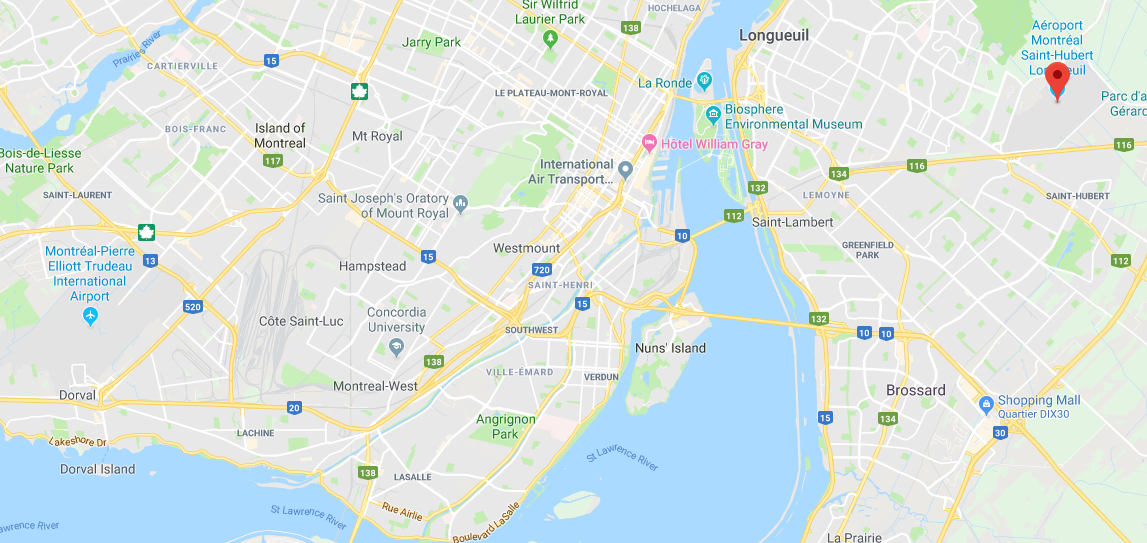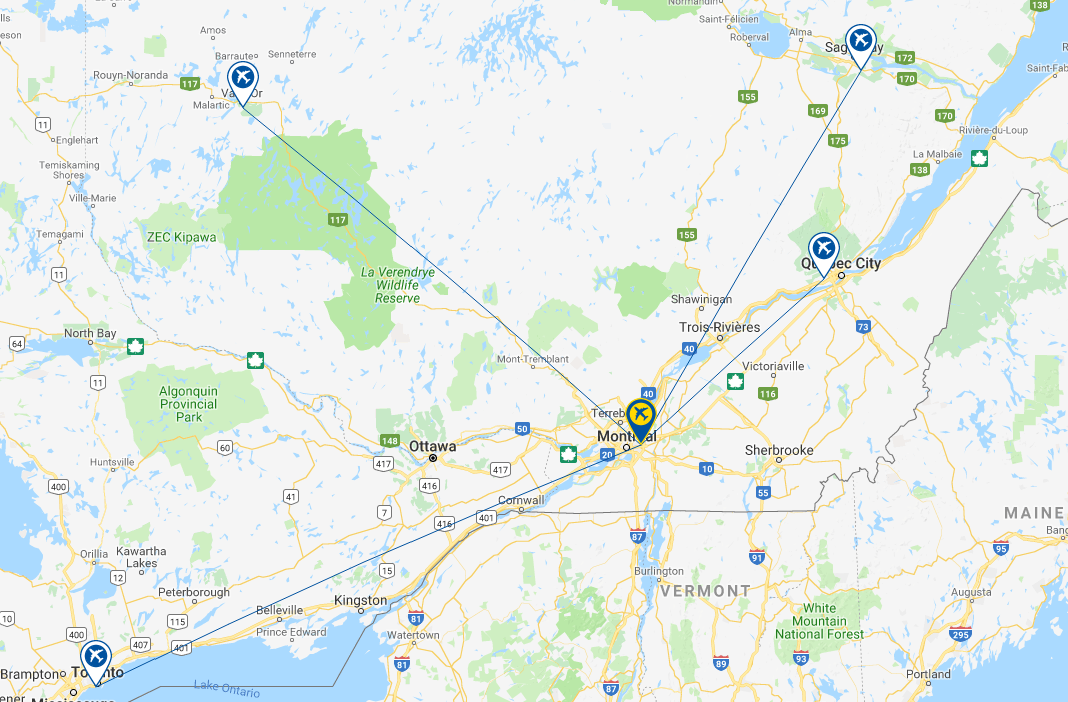Summary:
- Montréal's original but almost forgotten Saint Hubert airport can now accommodate larger aircraft after a runway upgrade;
- This opens the door to alternative city-city air connections between main business centres in eastern Canada;
- While the airport infrastructure has improved some work still needs to be done to improve surface transport;
- Foreign flights could follow in the future as Saint Hubert is already classified as an airport of entry by Nav Canada, and staffed by Canadian Border Services Agency.
In order to complete the work the airport had to engage in four out-of-court lawsuit settlements which were filed in 2009 and 2010 by more than 25 users of the airport, regarding the management of the facility and various transactions by the city involving the sale of airport land.
This development suggests that Saint Hubert could become a genuine secondary airport for Montréal, which has lacked one since the distant Mirabel Airport turned to cargo and general aviation activities in 2004. Distance is not an objective at Saint Hubert, which lies just 10 miles (16 km) east of Downtown Montréal, actually closer then the main Pierre Elliot Trudeau airport.
MAP - Saint Hubert is located around 10 miles east of downtown Montreal, while the city's main gateway is to the west of the city Source: Google Maps
Source: Google Maps
That would mark quite a renaissance for Saint Hubert, which was Montréal's first and only airport when it opened in 1928 until Dorval (later Trudeau) opened in 1941 as Saint Hubert was considered no longer to be adequate and the Dorval site, at the city's race track, enjoyed good weather conditions.
Saint Hubert is not going to be an outright competitor to Trudeau. It lacks the benefit of the under-construction Reseau Electrique Metropolitain (REM) automated rail transport system, which will include the Trudeau airport in its network. Little of the REM will cross the St Lawrence River although one extension will go to the Longueuil Université de Sherbrook and could possibly be extended further. On the other hand Saint Hubert is close to a major highway (#116).
According to CAPA - Centre for Aviation data Saint Hubert is a domestic-only airport, supported by one regional airline, Pascan Aviation, which flies to four destinations including two major city airports in Quebec City and Toronto (Billy Bishop downtown/island airport), using BAe Jetstream 31 and Pilatus PC-12 aircraft.
MAP - Saint Hubert Airport is currently only served by commuter carrier Padcan Aviation and linked to four destinations, including Quebec City, Toronto Source: CAPA - Centre for Aviation and OAG (data: w/c 03-Sep-2018)
Source: CAPA - Centre for Aviation and OAG (data: w/c 03-Sep-2018)
With a 2375 m x 45 m runway, the airport could now look to improving and increasing connectivity with these cities, acting as a 'city centre' airport for larger turboprop aircraft in the way that the Billy Bishop airport does in Toronto. However, enhanced surface transport would be required, along with better terminal facilities. Indeed this airport might well be perfectly suited to one of the semi-permanent terminals referred to in a recent The Blue Swan Daily article on temporary terminal structures.
There is also an opportunity to establish itself as a 'low-cost' base. Domestic LCC seats currently account for 36.1% of the total in the whole of Canada and internationally 11.9% (average 24%). And yet the Trudeau airport has only 9.2% LCC seat capacity.
After lagging other airports serving similarly sized cities for years, as highlighted by The Blue Swan Daily earlier this year, the problem at Trudeau now is more one of lack of capacity as it grows rapidly. Saint Hubert could benefit from the situation and the ideal scenario would see both it and Trudeau connected by the REM as London Heathrow and London City airports in the UK may be when the Crossrail line opens in autumn 2019.
As for foreign air services those may be some way in the future but Saint Hubert is already classified as an airport of entry by Nav Canada, and staffed by the Canadian Border Services Agency but they only handle general aviation aircraft with no more than 15 passengers, currently.
A master plan will be drawn up for the airport, within the parameters of the Sustainable Mobility 2030 Policy of the Transport Ministry. The plan will be published in early 2019 and will also define how best to develop the facility to position the airport as efficient and affordable, attract airlines-particularly low cost carriers- and promote the expansion of regional air transport. Public consultations will also be held to ensure that the project reflects the needs of local citizens, municipalities and businesses.